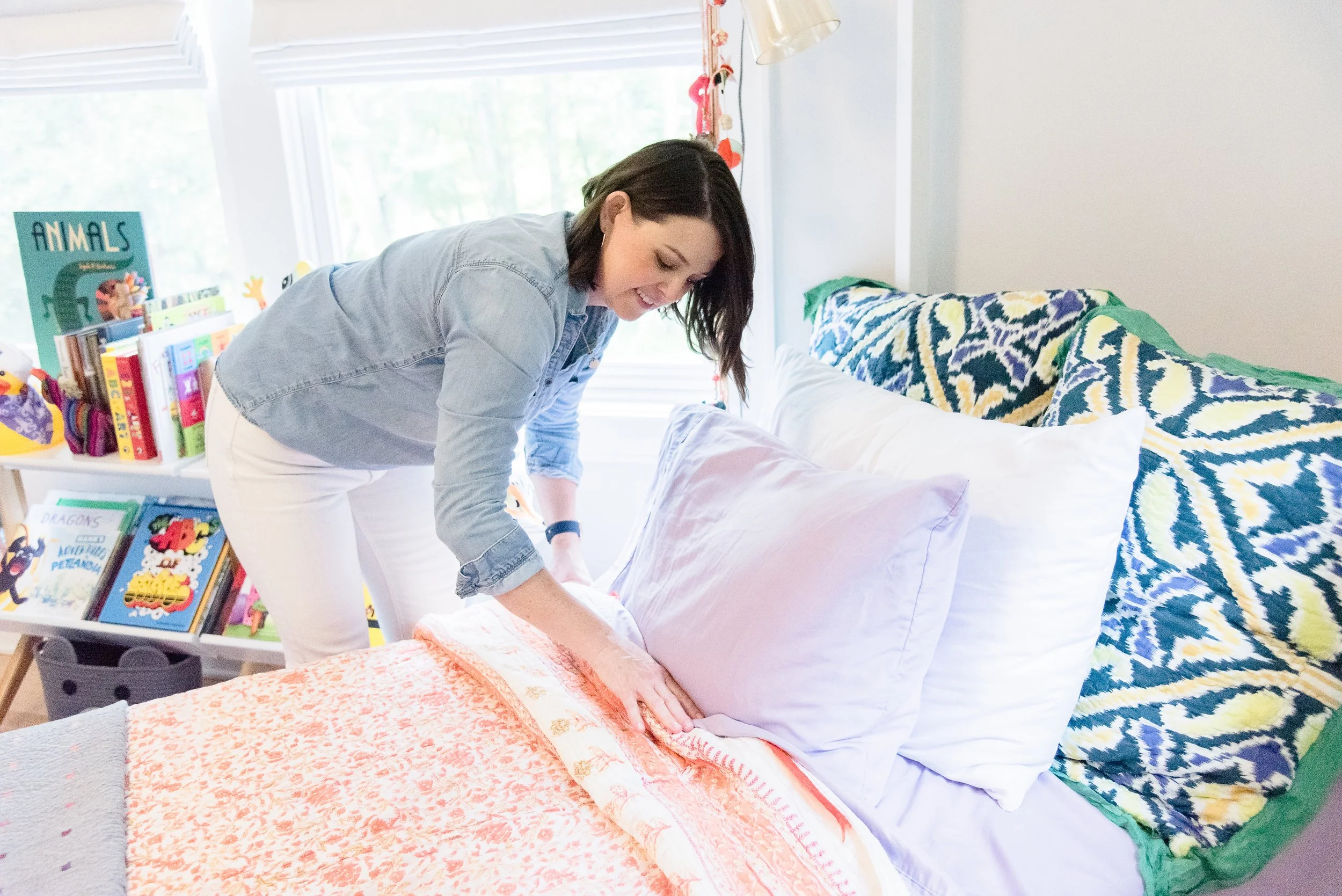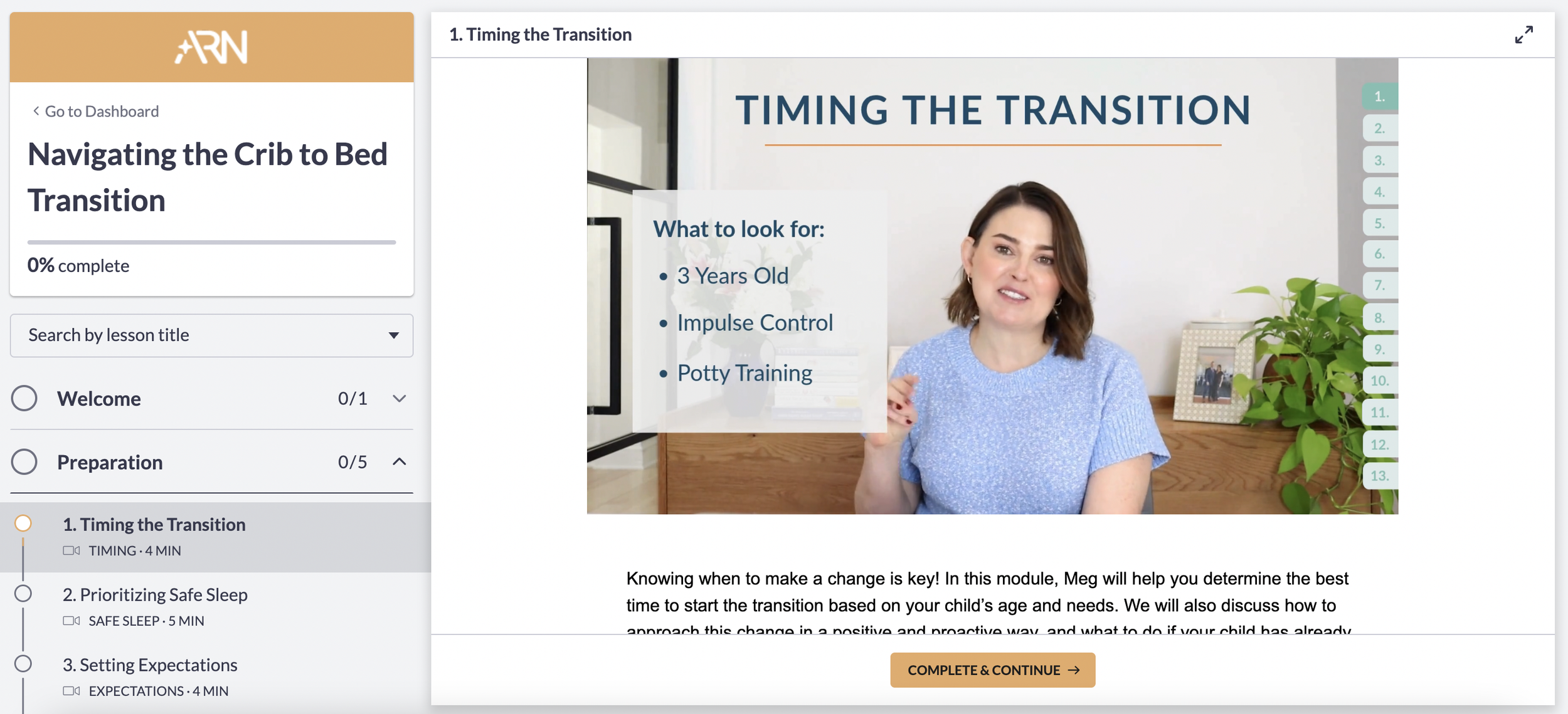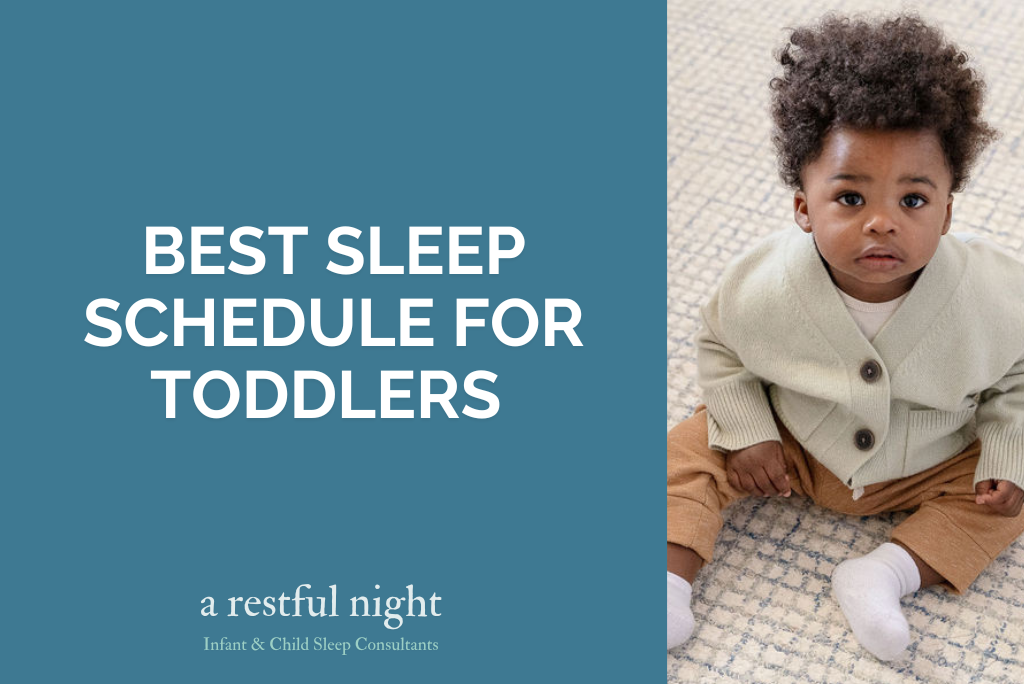Should You Transition Your Toddler Back to the Crib?
You made the big move from the crib to the bed. Maybe it was because your toddler started climbing out of the crib, or perhaps you thought they were ready for this milestone. But now, days (or even weeks) later, bedtime has become a battle. Your child is getting out of bed repeatedly, wandering into your room at all hours, or refusing to sleep altogether.
So you're wondering: can I just put them back in the crib?
It's a question we hear often from exhausted parents, and the answer isn't as simple as yes or no. Let's talk about what's really going on, why moving backward rarely solves the problem, and what to do instead.
Why Parents Consider Moving Back to the Crib
The reasons parents want to reverse the crib to bed transition usually fall into a few categories:
The transition happened too soon. Maybe your 18-month-old started climbing out of the crib, and you panicked and moved them to a bed before they were developmentally ready. Now they don't understand boundaries or have the impulse control to stay put.
TIP: We have a blog that’ll help you time this change properly!
You weren't confident about the decision. Deep down, you weren't sure it was the right time, but external pressure (a new baby on the way, well-meaning advice, or just thinking you "should") pushed you to make the change before you felt ready. Your child senses your uncertainty, and begins pushing boundaries because of it.
The setup is confusing. Perhaps you kept the crib in the room alongside a toddler bed, or there's a twin bed that used to be for guests. Now your child bounces between the two, and they’re not sure where they're actually supposed to sleep.
Sleep has completely fallen apart. Bedtime that used to take 15 minutes now takes two hours. Your toddler appears in your doorway multiple times per night. Early morning wake-ups have become a daily struggle.
When you're in survival mode, the crib can start to look like the answer to all your problems. After all, your child slept well there before, right?
The Hard Truth: Moving Back Rarely Fixes the Problem
Here's what we need to talk about: if you weren't confident about the transition to begin with, moving your child back to the crib isn't going to restore that confidence. In fact, it usually creates more confusion: for both you and your toddler.
Think about it this way: imagine you decided to potty train your child, but after a few accidents, you put them back in diapers. Then a month later, you try again. Then you switch back to diapers. This back-and-forth doesn't help your child learn, it just sends mixed signals about what you expect from them.
The same principle applies to the crib to bed transition. When you move your toddler back to the crib after they've already experienced the freedom of a bed, you're essentially saying, "Actually, never mind. I'm not sure about this either." Toddlers are incredibly perceptive. They pick up on your uncertainty, which only reinforces their own resistance and confusion.
When Moving Back Might Make Sense
There is really only one situation where moving back to the crib could be appropriate:
You made the move because you thought it would help your young toddler sleep better.
If your toddler is under 2 years old and you moved to a bed because you thought it would help your baby sleep better, you may want to consider moving them back in!
Often parents tell me their baby “hates the crib” or “only wants to sleep in our bed.” Maybe your baby is resisting bedtime, standing up in the crib, or crying as soon as you lay them down. This resistance isn’t because of the crib itself — it’s because your child hasn’t yet developed the skill and confidence to fall asleep independently.
The Real Problem: Lack of Clarity and Consistency
1. Parent Readiness and Confidence
You need to be 100% committed to this change before you make it. If you're second-guessing the decision, your toddler will sense that uncertainty and push boundaries even harder.
Ask yourself honestly:
Do I believe my child is ready for this?
Am I prepared to enforce boundaries consistently?
Have I created a plan for how to respond when they get out of bed?
If the answer to any of these is "not really," that's a sign you need to shore up your confidence and strategy: not necessarily move back to the crib.
2. Environmental Setup
Confusion about where to sleep is a huge problem. If your child's room contains both a crib and a bed, you're giving them a choice when they need clarity. Toddlers don't have the executive function to make good decisions about where they should sleep: that's your job as the parent.
The solution: Make one clear sleeping space. If you're transitioning to a bed, dismantle the crib the same day and remove it from the room entirely. Don't leave it "just in case" or as a backup option. Commit fully to the new setup.
Similarly, if there's a twin bed or daybed in your toddler's room that serves another purpose (guest bed, space for you to lie down during bedtime routine), this can create confusion. Your child might wonder: "Am I supposed to sleep in the big bed? The crib? Where do you want me?"
Get rid of ambiguity. One bed. One expectation!
3. Clear Boundaries and Expectations
Toddlers need to know exactly what's expected of them, and those expectations need to be enforced consistently. It's not enough to say, "Stay in your bed." You need to discuss the expectations well in advance, and show them (over and over) what happens if they do get out overnight.
This is where many parents struggle. They make the transition to a bed but don't have a plan for what to do when their child inevitably tests the boundaries. Without that plan, bedtime becomes a free-for-all.
What to Do Instead of Moving Back
If you're struggling with the crib to bed transition, here's what actually works:
Step 1: Get Clear on Your Why
Why did you make this transition in the first place? Was it safety-related? A new baby? Your child seemed ready? Get clear on your reasoning, because you'll need to remind yourself of it when things get hard.
Step 2: Commit Fully to the Decision
Remove the crib from the room. Make it clear to your toddler (and yourself) that this is the new normal. No backup plans, no "let's try this for a few days and see."
Think of it like this: you're helping your child make the right decision by removing other options. This isn't about being rigid or controlling: it's about providing the structure toddlers need to feel secure.
Step 3: Set Up the Environment for Success
Remove distractions. Take toys, books, and stimulating items out of the room or place them where your child can't easily access them at bedtime.
Use an OK-to-Wake Clock. This visual cue helps toddlers understand when it's okay to get out of bed in the morning. If you started using one while they were still in the crib, keep that consistency through the transition.
Install a baby gate if needed. Some toddlers need the physical boundary of a gate in their doorway (rather than a closed door) to understand they need to stay in their room.
Step 4: Create a Clear Response Plan
Decide ahead of time: what will you do when your child gets out of bed? Will you walk them back silently? Use a specific phrase? Implement a check-in system?
The specifics matter less than your consistency. Whatever approach you choose, stick with it every single time… even at 2:00 am when you're exhausted.
Step 5: Build in Positive Reinforcement
Help your toddler feel proud of this milestone. Use a sticker chart, verbal praise, or small rewards when they stay in bed successfully. Make it exciting to be a "big kid" rather than something they're forced into.
When You Need More Support
Here's the truth: the crib to bed transition is about so much more than swapping out furniture. It's about boundaries, consistency, and your confidence as a parent. It's about helping your child develop impulse control and independent sleep skills in a new context.
If you're feeling overwhelmed or uncertain about how to make this transition stick, that's exactly why we created our Navigating the Crib to Bed Transition Course. This comprehensive program walks you through every step of the process: from knowing when your child is truly ready, to setting up the room, to handling the inevitable challenges that arise.
You'll learn:
How to prepare your toddler (and yourself) for the transition
Exactly what to say and do when your child gets out of bed
How to maintain boundaries without power struggles
How to use tools like the OK-to-Wake Clock effectively during this transition
What to do if things aren't going according to plan
Course Includes:
13 bite-sized lessons you can complete in under 60 minutes total
A simple 3-part framework: Preparation, Managing the Transition, and Troubleshooting
Practical, real-life strategies developed through personal and professional experience — that actually work!
10+ downloads to guide you every step of the way — including cheat sheets, toddler visual charts and an incentive program.
Final Thoughts: Trust the Process
Moving your toddler back to the crib might feel like the easy solution, but it usually just postpones the real work that needs to happen: establishing clear boundaries, committing fully to the change, and helping your child develop the skills they need to sleep independently in a bed.
If you made the transition and it's not going well, don't beat yourself up. This is hard, and very few parents get it perfect on the first try. But instead of moving backward, lean in. Get support, create a plan, and trust that with consistency and confidence, your child will adjust.
And remember: you're helping your child make the right decision by providing clear structure and expectations. The confidence they’ll build through this transition will last a lifetime!
Ready to make the crib to bed transition work for your family?
Check out our online course today, or, if you’d like more hands-on support while navigating this change, fill out this quick questionnaire, and our team will be in touch!
Meg O'Leary is an Infant and Child Sleep Expert and the founder of A Restful Night. Based in Westchester County, NY, she leads a team of certified sleep coaches to provide virtual support to families across the US and around the world.







